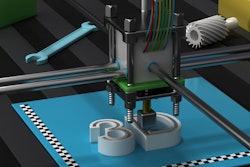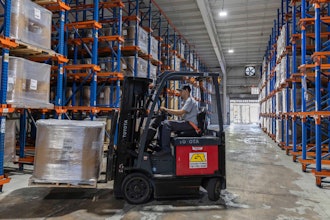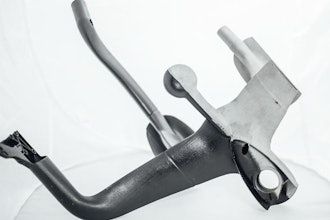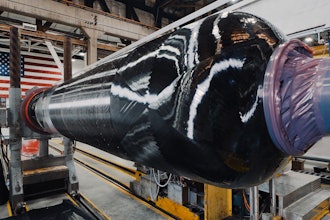
Companies need a solid, comprehensive strategy to make appropriate automation decisions. Data is their currency — but how it’s used, rather than how much businesses accumulate, determines its value. Without scalable results and agile processes, today’s manufacturing and distribution businesses will struggle to succeed. Strategic process automation:
- Facilitates more predictable outcomes and more accurate measures of process improvements.
- Frees employees to analyze, adapt and improve — tasks machines can’t do.
- Provides leadership with the tools to achieve operational efficiency by optimizing processes based on data analysis.
When you’re in the manufacturing business, how do you approach digital transformation? Is there more than one way? Are their pitfalls to avoid? How can you identify — and mitigate — the hurdles?
Expected and unexpected challenges can undermine even the most strategic, well-planned automation initiatives. "One of the most disruptive digital transformation roadblocks is organizational resistance to change,” says Ivan Kot, solution consultant for transition. “Employees entrenched in traditional processes and concerned about job security will continue to resist modernization unless their companies address those apprehensions.”
Sabre Limited President Robert Jolliffe believes, “The primary limitation is management that fails to see digital transformation as value added. Sometimes, older leadership teams undervalue information technology. Soft assets into which many digital technologies fall are something they don’t understand or prioritize. Younger managers “get” the value of digital technology and often push for digital transformation. But older generations’ lack of investment can hold them back because of poor systems and weak teams.”
“Before the pandemic,” says David Ginsburg, VP of products and services at Aryaka, “a combination of lack of understanding about how to proceed or thinking that the current environment was too difficult to perform created roadblocks. But the pandemic forced digital transformation in many areas, and now enterprises must evaluate that transformation, see what will serve them moving forward, and eliminate or reverse changes that were merely tactical.”
“A serious roadblock to digital transformation is lack of data consistency and standardization,” says Melanie Nuce, SVP of Corporate Development at GS1 US. “Digital transformation requires a high level of collaboration to move organizations forward toward a common goal like increased efficiency or automation. The supply chain’s manufacturing node must embrace standards that enable rapid data sharing with trading partners or they risk investing in systems that aren’t interoperable or valuable beyond their own four walls.”
How Do You Get Automation Wrong?
"These companies must take into consideration deskless workers’ skill levels, task management competencies and location — whether they’re working in the field, warehouse or somewhere else. Businesses need to implement software that make routine tasks and communication easier for everyone, workers and managers alike,” says Sofia Fominova, Co-Founder and President of Truligent.
“How do manufacturing and distribution companies get automation wrong? They stop too soon.
"You have to progress through several stages when you automate. First, you collect and store data — and analyze it right away. If you don’t, you create another problem, because now you have to deal with physical operations and the data layer. Yet you’re not getting value from the data to improve the operations,” says Chris Nicholson, CEO of Pathmind.
“Additional visibility doesn’t solve the problem. Data gathering’s only half the process. Next you go through analytics stages: the first stage, descriptive, identifies what’s going on now. The second stage, predictive, looks at past patterns so you can see what may happen next. The final stage, prescriptive, helps determine that — based on what’s about to happen — what do you do now. Businesses care about the final stage. They want to know what they should do, but they don’t understand everything they need to build to get there.”
“Businesses see automation as something they add to their present operations, but they’re not prepared for its secondary effects. Changing workflows has a ripple effect,” warns Nicholson. “We call that ‘ecological repercussions.’ Where do you store digitized paperwork? Who can access it? How is it shared? With whom do you communicate to figure out what’s in the forms? All these processes change because you’ve digitized forms. You must prepare for that.”
The Competitive Advantage
Process automation increases transparency, efficiency and reliability. It highlights what’s happening and helps companies understand root causes when something goes wrong so they can fix it. This automation helps for compliance, too. You gain efficiency by augmenting teams with automation so they can focus on less menial, repetitive tasks and by identifying and eliminating constraints or waste. When companies increase efficiency, they can charge less and still stay competitive in the market.
“Automation often relies on workflow standardization, which leads to more reliable output and better predictions about that output. More accurate predictions allow you to keep your promises to your customers,” says Nicholson.
As Kot says, “Automation for the sake of automation — that neither solves a clear problem nor serves efficiency — is the surest path to have your digital transformation venture go down in flames. Process automation is a fundamental shift and serious business risk, and its justification requires rigorous feasibility and cost-benefit analyses.”
“Some manufacturers view digital transformation as an event, not a journey. For a successful transformation, companies need a good technology partner to guide them on taking logical, sustainable steps along the automation journey,” says Vinod Rana, Global Head of Customer Innovation Centers for Belden, Inc.
Digital transformation sets up manufacturers and distributors for more success. Those who’ve already embraced digital transformation are well-positioned to be agile and respond to rapidly changing supply chain demands and consumer behaviors.
Ricardo Craft is the EVP of Product Management at Conexiom.






















